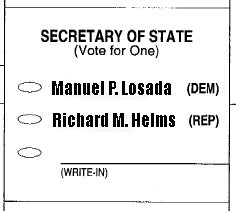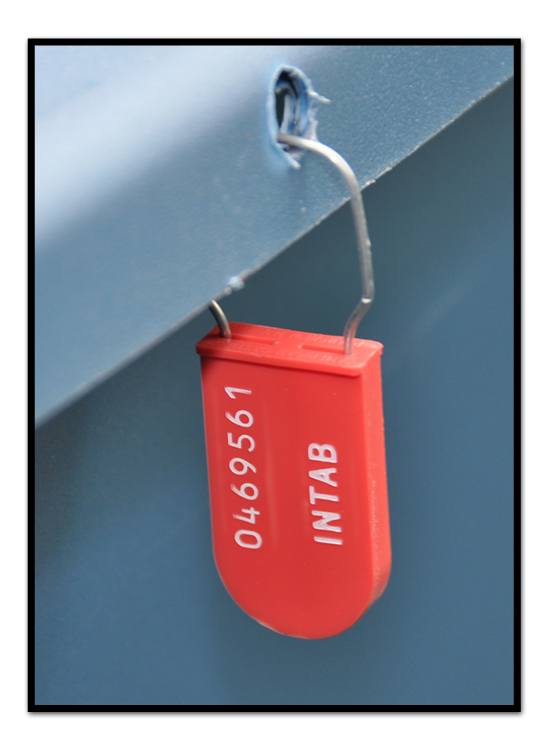[
In my post on March 11, 2010, titled Impersonating Kootenai County Electors, I explained the process which would allow counterfeit electors to vote in person at polling places. That process is only slightly more difficult now because electors are supposed to be required to present state-issued photo identification before receiving a ballot to vote.
In this post, I’ll explain how easily voted absentee ballots can be altered by dishonest elections office workers to affect the outcome of an election. From the email sent by Chief Deputy Secretary of State Tim Hurst to several county clerks and county elections officials on October 27, 2010, we know that the Idaho Secretary of State, Ben Ysursa, authorized certain officials to begin opening absent elector ballot envelopes before election day. That authorization was contrary to law, specifically Idaho Code 34-1005 and 34-1008. Both laws require the marked absent elector ballots to be kept in their sealed envelopes until election day. Ysursa gave the illegal authorization so the marked absent elector ballots could be flattened to run more easily through the tabulator machinery on election day. In other words, they broke the law for the convenience of the county clerks.
But Ysursa’s illegal authorization created a pretty obvious vulnerability, one he and the county clerks should have considered. Removing the marked ballot and flattening it requires that it be handled by election office workers. They must handle it carefully, which means they have time to examine how a ballot has been marked before that ballot has been run through the tabulator machinery. Examination and handling make it possible for election office workers to make additional marks surreptitiously on the ballot before it is tabulated.
Here are two examples of how a dishonest election employee, or more than one, could affect the election outcome. For simplicity, both examples will use a two-candidate race for an office. Here is how it might have appeared on the ballot in Kootenai County:
Let’s suppose the crooked elections office employee has been told to skew the race in favor of Helms.
In our first example, Elector Doe doesn’t care to vote for any of the candidates, so he does not mark the oval by either name. He simply does not vote the ballot selection. All the crooked employee has to do is mark the oval by Helms. That makes it look to the tabulator machinery as if Elector Doe cast his vote for Helms.
In the second example, assume Elector Doe voted legally for candidate Losada. The crooked employee can’t easily erase the marking in the oval by Losada and then mark the oval by Helms, but he can invalidate the legal vote for Losada by also marking the oval by Helms. With both ovals marked, neither Losada nor Helms get the vote which Elector Doe intended and did vote for Losada. The crooked employee couldn’t add a vote to the “favored” candidate Helms, but he could neutralize a vote for the “unfavored” candidate Losada.
In both examples, it was the unnecessary opening of ballot envelopes and the illegal handling of ballots that made it possible to manipulate the election outcome. The first example is a more difficult action to detect after illegal marking, because one oval marked is what one would expect to see on an unaltered ballot. The second example should attract attention when the ballots are visually examined because of the unexpectedly high number of both ovals being marked.
Dishonesty like this works only if the votes for the candidates or issues are comparatively close. Nevertheless, it can work. The Secretary of State and his county clerks willingness to sacrifice election integrity for speed help it work.



those scumbags shouldn’t be anywhere near a pencil.
Comment by Ancientemplar — November 2, 2010 @ 7:48 pm
That was a major focus for me when I witnessed the process as an official watcher/challenger. I was present for the first three hours, relieved by another Republican Watcher who observed for 2 hours, and finally a third GOP watcher for the remaining 3 hours for the day. I specifically asked about the policy of any writing instruments at the table where the openings and stacking occurred. The new elections supervisor, Carrie Phillips assured me that there were no writing instruments.
I saw none. The process was illegal but the ballots were handled with no opportunity for mischief, unless someone got into the locked tubs overnight and had a marking party. The room was secured with a bailiff on duty all night in the building.
Comment by Gary Ingram — November 2, 2010 @ 8:12 pm
A “clean” violation of the law. Cute.
Comment by Pariah — November 2, 2010 @ 8:19 pm
Gary,
You said the tubs were “locked.” Were the tubs steel with hinged lids and metal hasps or were they Rubbermaid home storage tubs? Were they padlocked or sealed with wire shackle seals like this one?

Comment by Bill — November 3, 2010 @ 6:43 am
You mean you didn’t know this is the way it’s always been done?
Comment by Gary Ingram — November 3, 2010 @ 10:26 am
Gary,
I wasn’t implying that wire shackle seals were the wrong method. I was just asking for clarification on what you said.
Comment by Bill — November 3, 2010 @ 12:11 pm
My precinct changed it up a bit. No tub on floor and the ballots went into a metal locked container on the table which was a far cry better than the last time. Another thing I noticed was they checked your name off as you left as well in addition to your signature when you came in to vote. First time I noticed that.
Comment by Stebbijo — November 3, 2010 @ 12:48 pm
Stebbijo,
When you came in to vote, they should have checked your photo ID, verified your name and address, and given you the ballot. After you deposited your ballot in the box, they should have said something like “Stebbijo has voted.” Then, they should have entered your sequence number in the poll book. When you say they checked your name off as you left, could they have been entering or at least noting your sequence number? The sequence number starts with 1 with the first voter and ends with the sequence number of the last voter to have voted before the polls closed. The last sequence number is supposed to equal the number of ballots in the box when they open the box and count. So, if there are 1,501 ballots in the box for a particular precinct, the last sequence number for that precinct ought to be 1,501.
Comment by Bill — November 3, 2010 @ 1:40 pm
I would like to add to what Gary observed at Elections. I was also an official watcher/challenger election day from 8 to 10 pm. I observed pairs, yes PAIRS of workers in their own areas counting write-ins with pencils in hand and NO 3rd judge. Worse was the pairs in private rooms that were duplicating kicked out ballots. The person on the left would say aloud EACH vote as the person to the right would mark the new ballot to resend through the machine. The politically left or right person could easily say or write a different outcome for that ballot. The damaged ballot goes in an envelope numbered the same as the new one and filed away ONLY to be seen again in the case of a challenge. I am thinking Brannon City Election ? I am sure that Hayes will do a better job of impleminting the law and addressing our concerns. To be fair though, Carrie had a HUGE job with the massive amount of Ballots to be counted and Todd Tondee and Dave McDowell were very helpfull.
Comment by JT — November 4, 2010 @ 9:56 pm
JT,
While it was good that no individual election worker or volunteer was apparently ever left alone with ballots, there is absolutely no valid reason for all of them to have a pencil or any other writing instrument that could have created a machine-readable mark. If their official duties did require them to write something to record their action, the writing instrument should have been something that could not be machine-read, and it probably should have been something obvious like a pen with red ink. The one exception to the “no pencil” requirement would be the persons who are authorized to inspect original ballots unreadable by the tabulator machinery and then mark substitute (duplicate) ballots.
The “kicked out ballots” you mention sound like ballots that could not be machine read. That would include ballots that have write-ins. It also includes ballots that have been physically damaged or for some other reason simply cannot be processed and read by the tabulator machine. It is permissible for elections officials to evaluate those damaged original ballots and if the intent of the voter can clearly be determined from that examination, the elections officials are permitted to create a substitute (duplicate) ballot that the machine will accept. However, both election officials are required to examine both the original and the substitute (duplicate) ballot to ensure accuracy in duplication. During the investigation for the election contest lawsuit, we were finally allowed to examine all (allegedly) of the damaged original and remade substitute (duplicate) ballots. I examined and photographed them. Many of those were damaged through no apparent fault of the elector, but rather by the electric envelope opening machinery used by the elections office.
Comment by Bill — November 5, 2010 @ 6:34 am